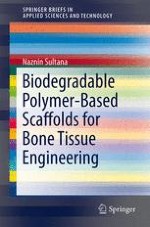2013 | OriginalPaper | Buchkapitel
2. Fabrication Techniques and Properties of Scaffolds
verfasst von : Naznin Sultana
Erschienen in: Biodegradable Polymer-Based Scaffolds for Bone Tissue Engineering
Verlag: Springer Berlin Heidelberg
Aktivieren Sie unsere intelligente Suche, um passende Fachinhalte oder Patente zu finden.
Wählen Sie Textabschnitte aus um mit Künstlicher Intelligenz passenden Patente zu finden. powered by
Markieren Sie Textabschnitte, um KI-gestützt weitere passende Inhalte zu finden. powered by
